See My Voice: A Deaf Perspective (Video)
Deaf EvCC students Kendra Omath (left) and Aspen Carbajal (right) sign to each other in conversation.
In the front of the classroom, near the instructor and the board sits an interpreter, transforming the instructor’s lesson into sign language. This is the classroom experience for Everett Community College students like Kendra Omoth, 29, and Aspen Carbajal, 18, who are both Deaf.
Beyond the classroom, interpreters are not always present, and in hearing environments Carbajal and Omoth often find they adjust themselves in order to fit.
Omoth is scientifically identified as hard of hearing, however, she views herself as a Deaf person. “I need a service dog at home to hear a door knock,” she says. Born to two profoundly Deaf parents, Omoth’s life always included American Sign Language (ASL) at home and English in interaction with hearing individuals.
In contrast, Carbajal was born into a family with two hearing parents. At the age of one, doctors told her parents she is Deaf, which is when her family was introduced to SEE (Signed Exact English) and speech therapy. “I didn’t really find out about ASL until I was on the bus on my way to the Northwest School.”
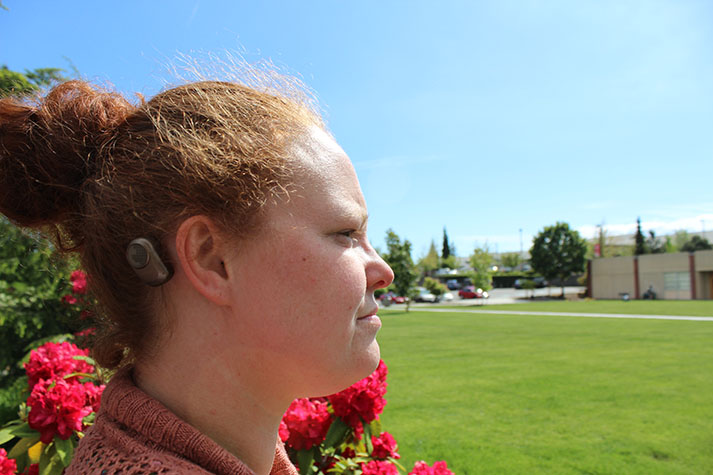
After only a year of having the BAHA, Omoth began to debate it’s value of the device. Her motivation behind getting the device stems from the frustration in lack of communication, her pleas for another chance to understand typically met with a shrug of “never mind” signaling the end of conversation.
Prior to EvCC Carbajal and Omoth each attended a variety of schools in search of an education best suited towards their future success. Omoth’s education was a combination of mainstream schools, Washington School for the Deaf (WSD), and Oregon School for the Deaf (OSD). Carbajal attended a program for Deaf students through mainstream school, in addition to the Northwest School for the Deaf, and WSD.
Looking back on her school experience, Omoth said: “I’m happy to have experienced Deaf institution schools. I’m happy to have met the people I met there. But if I would have had the choice I would have never gone … In a way, college feels like a mainstream because I do see Deaf people, [and] I see hearing people,” Omoth says. “[College is where] I get two things in one place, that’s where I found my middle ground,” referring to the mix of hearing and Deaf environment, filled with resources most beneficial to her success.
Now in college, Carbajal explained, “EvCC is amazing! Our disability office here is very good, and it’s one of the best programs I have seen that works with interpreters.” Deaf students at EvCC are offered a variety of resources: interpreters, note takers, the CART system, all based on the student’s preference. However, as someone who can be reserved, Carbajal adds, “it impacts me to socialize here,” the question of her socializing on campus often comes down to whether or not a hearing person will take the time to learn how to communicate with her.
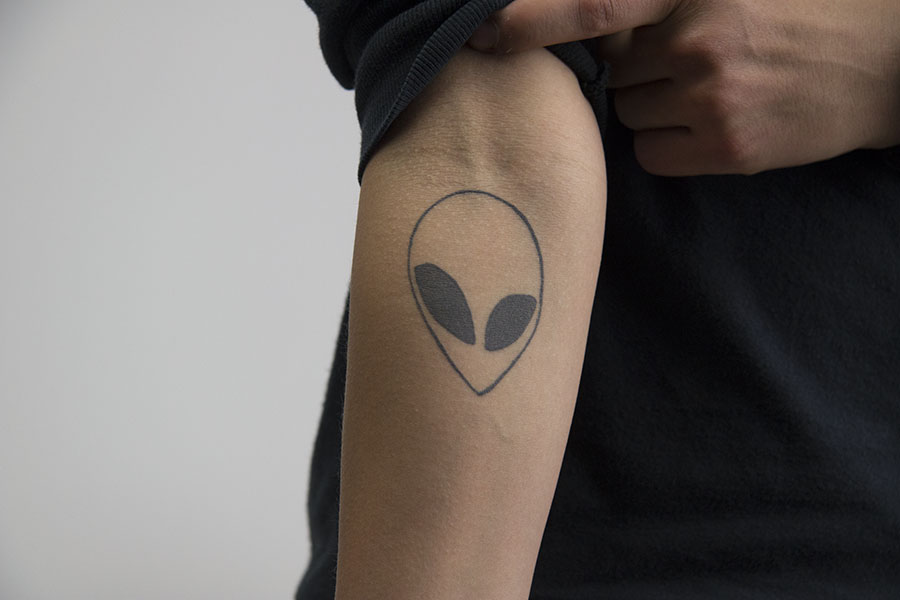
Carbajal showing off her tattoo said: “I picked out an Alien to represent me in your hearing world, versus mine. I have always felt like an Alien towards hearing people.”
Omoth admits there are improvements that could be made, though she doesn’t necessarily know the answers. “If you see a problem, why can’t you help me fix it? Why are you expecting me to fix it? Just because I’m Deaf, you think I have the outreaches? What if you have the better connection than I do?”
Omoth insists that communication between hearing and Deaf individuals doesn’t need to be so difficult, there are forms of communication beyond speech. Taking the time to learn how to communicate the bridge is essential. Yet, Omoth is still questioning: “Why do we make it such a problem?” There are forms of communication beyond using voice Omoth reminds: “How hard is it to pick up a pen and a paper? How are you doing today? You look upset, can I help you? I just don’t understand.”
“As a hard of hearing person, I find myself feeling lucky because I can take my hearing aid off, and I can’t really understand most people, it’s a blur of words. But music, loud enough, I can still hear it.” Music binds Omoth’s two worlds, hearing and Deaf, together. “I love music… music is the one thing, I don’t know what I would do if I lost that.” Omoth remarked.
Carbajal too shares a love for music, “I just crank up the bass.” For those who are Deaf and can’t find a music to suit them, Omoth recommends techno, because “there’s no words… [you can] do whatever you want now.”
“What’s cool now is that they are starting to have interpreters actually interpret concerts,” Omoth revealed that the value of interpreters in concerts is that it allows full appreciation for all spectators, including the Deaf to experience the show. She herself has been to many concerts and music festivals, but an interpreter at the concert is a game-changer still.
A change in the way Deafness is viewed is essential to the success of Deaf individuals, Omoth insists. “[It’s] not a disability, it’s people’s attitudes that make Deafness a disability,” Omoth says.
As a hard of hearing person Omoth says she feels “lucky,” “I consider myself the best of both worlds: I can hear, I can speak basically. The words that I used every day are in my dictionary, if it’s a word I don’t use, then I can’t pronounce it.”
“Deaf people are really lucky because we have a beautiful language,” Carbajal added, but beyond just the language is also a unique culture, fully complete with stories, jokes and more which go with it. “[Deaf culture] is a beautiful culture. And that is why we are really lucky to have both worlds and to be in the hearing and the Deaf.”
There is one common misconception Carbajal would like corrected: “just because we don’t have a voice or because you don’t hear our voice, does not mean that we do not have a voice.”
*Authors Note*
The word “Deaf” is capitalized out of respect for the Deaf community and its culture.
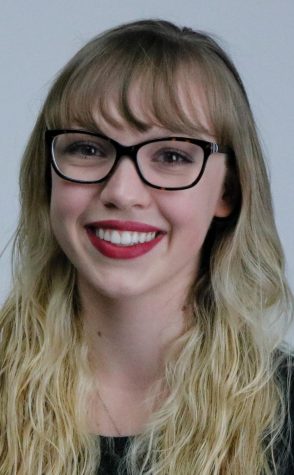
What interests you about journalism?
I loved journalism because it provides a medium to document important events, and the opportunity to create...
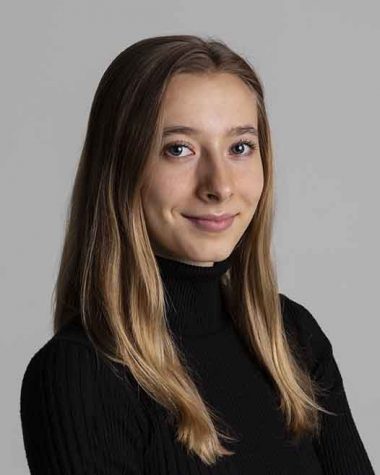
Where does The Clipper fit into your long-term goals?
My two years of editing experience have been amazingly formative as a leader and professional,...

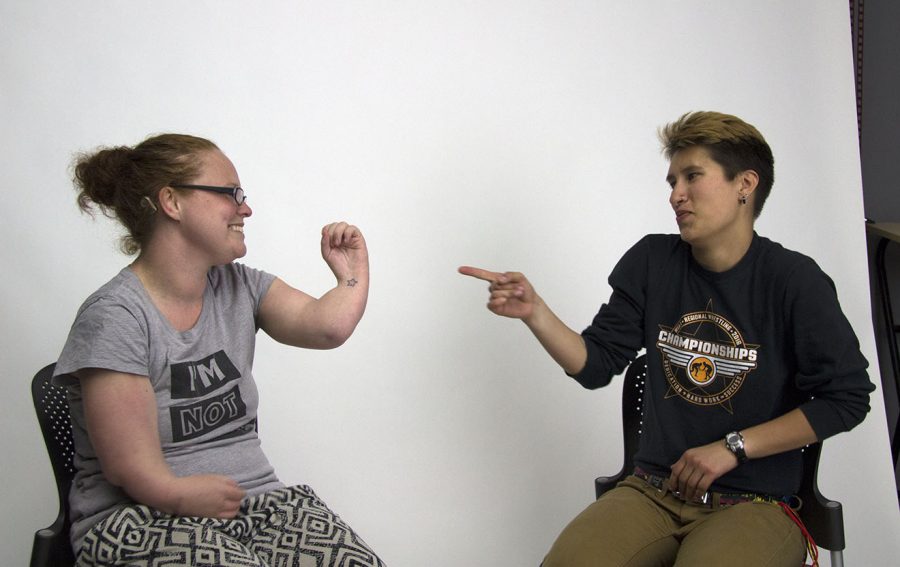
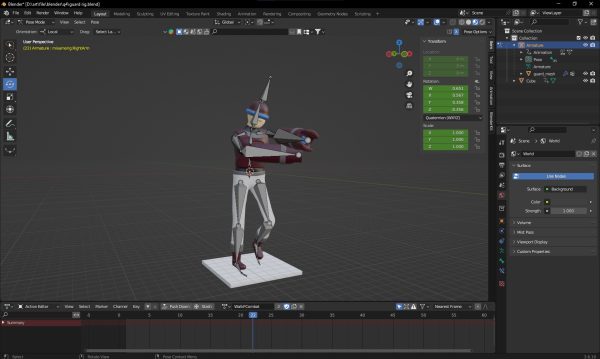
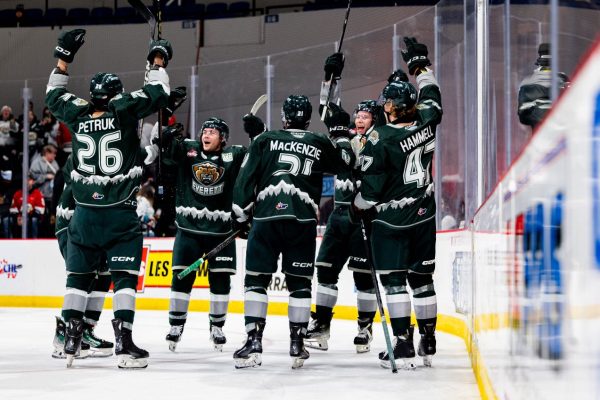
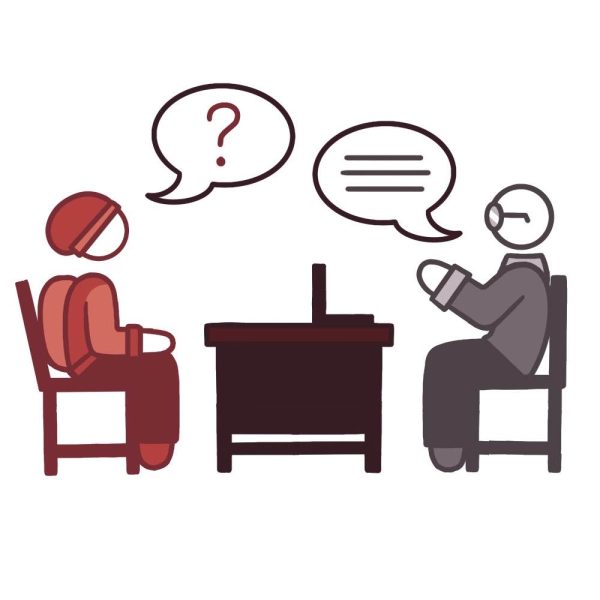
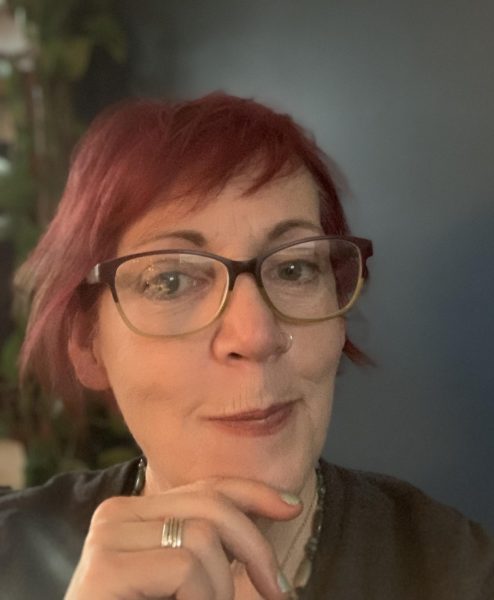
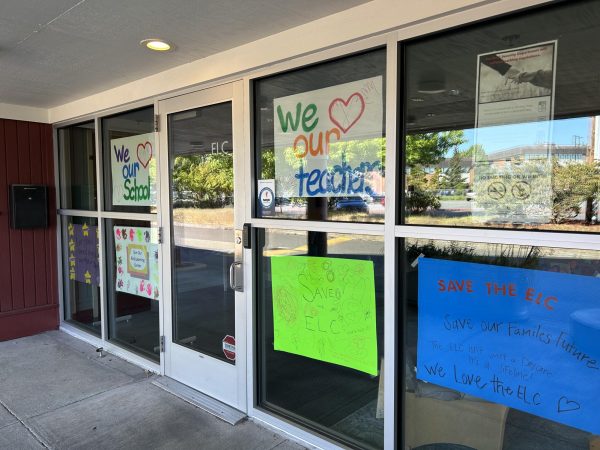
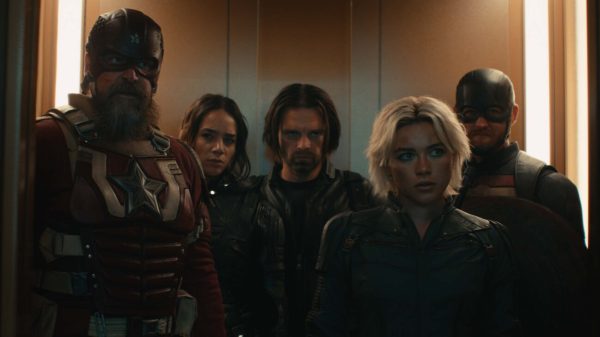
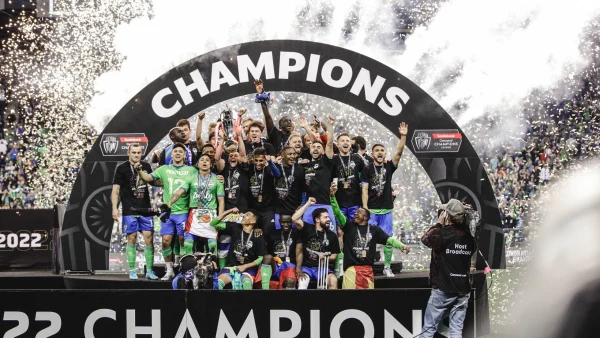
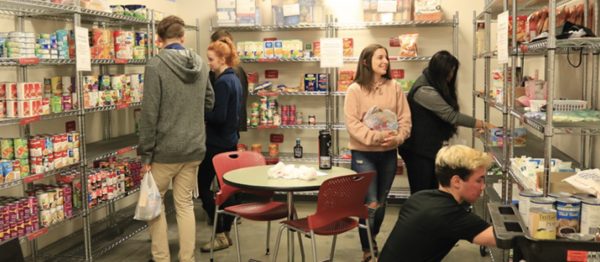
Janet Carbajal • Jun 10, 2018 at 11:13 am
Aspen Carbajal is my niece. She inspires me always with her will to learn and communicate. She express herself in many ways and always has a positive attitude doing life. I love her dearly.
Marlene Barnes • Jun 5, 2018 at 7:53 pm
I am SO glad you did this story! Both Kendra and Aspen are great people! They both help me with my learning of ASL, they give me the practice I need! I think we need to do more to make sure the needs of our Deaf students are met!
Christine Peterson • Jun 3, 2018 at 10:56 am
Hi,
I was experimenting at the weld jobs for 25 years until I fell accident at last weld job in 2000, taught my damage back and I weld some sculpture at shop in Pillager, MN now. Look up at my website
Thanks, CP